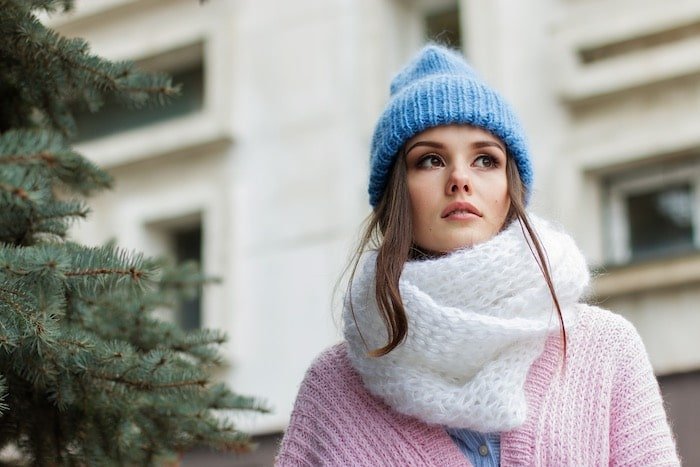
Winter weather is bad for all types of skin, but if you have rosacea, you’re likely to notice even more trouble when the snow starts to blow.
Find out why winter can be a trigger for rosacea and how to protect your skin.
Winter Weather Can Trigger Rosacea
The National Rosacea Society (NRS) states that winter can be a challenge for people with rosacea. In a survey of a little over 1,000 rosacea patients, 46 percent said that cold weather aggravated their condition, while 57 percent said they were affected by the wind.
In a separate survey of nearly 700 rosacea sufferers, 88 percent said that wind was the most common seasonal factor to aggravate rosacea, while 72 percent said the cold weather was a trigger.
Indoor conditions can also be a factor. High indoor heat, for instance, which is common during the winter months, aggravated rosacea in 63 percent of the respondents in mild and moderate climates, while affecting 57 percent of those in severe climates.
Then there’s holiday stress, which also occurs in the winter. It caused flare-ups in over half of the respondents regardless of the weather.
10 Ways to Reduce Rosacea Flare-Ups in Winter
To reduce your flare-ups and keep your skin looking and feeling great, try these tips.
1. Protect your skin from the wind.
With the wind being such a large factor in flare-ups, perhaps the best thing you can do is to protect yourself from it. Try to stay indoors on windy days. When you go out, cover your skin. Use hats and gloves, then use a scarf or mask to protect your face.
2. Wear layered clothing.
Wintertime means going out in the cold and then coming back into the heat. To avoid skin problems, wear loose, layered clothing that you can change as needed to protect both from outdoor cold and indoor warmth.
3. Use sunscreen.
Exposure to the sun is a trigger for rosacea regardless of the season. Make sure you continue to apply a safe sunscreen (like zinc oxide or titanium dioxide) to exposed skin on a daily basis.
4. Avoid hot drinks.
Hot chocolate and other warm drinks taste wonderful in the winter, but they can trigger a flare-up on your face. If it’s hot enough to make you feel overheated, it can cause a flare. Take most of your beverages cold or lukewarm.
5. Moisturize frequently.
Part of the reason skin suffers in the winter is the cold, dry air. It steals moisture from the skin, disrupting the outer barrier and increasing your risk of a flare-up. Moisturizing regularly and frequently is a must.
Be careful though—if you use products that contain harsh chemicals and fragrances, you could make your skin worse. Choose natural, safe formulas like those from CV Skinlabs. Our Calming Moisture and Body Repair Lotion are both made with nourishing ingredients that don’t aggravate the skin. Instead, they calm inflammation and penetrate with deep moisture.
6. Use a humidifier.
A humidifier replaces moisture in the air, helping to reduce dry skin. Placing one in your bedroom is a great idea during the winter months. It will help hydrate the air while you’re sleeping, allowing your skin to retain its own moisture.
7. Don’t stand over a hot stove.
Try to avoid long periods of holiday baking or cooking. Standing over a hot stove can increase your risk of a flare-up. Enlist some help, or make sure you do most of your preparation away from the direct heat.
8. Practice stress relief daily.
As the holidays approach, try to make sure you’re not overscheduling yourself. Maintain your boundaries, say “no” when you need to, and schedule time every day to do some sort of stress-relieving activity. Good options including walking, yoga, tai chi, meditation, time with a pet, going out with friends, or enjoying a craft.
9. Cool your skin.
If you start feeling hot for any reason, try cooling your skin right away to avoid triggering a flare. We recommend using our Rescue + Relief Spray. It’s instantly cooling and refreshing, but it won’t dry out your skin. On the contrary, it will moisturize and tame any inflammation that may be coming on.
10. Get enough sleep.
Your skin goes to work repairing itself while you sleep. That’s when it addresses damage like dryness and inflammation. If you don’t get enough sleep, your skin gets behind in its repair duties, which can trigger a flare-up.
Try to get 7-8 hours of sleep per night.
How do you avoid a rosacea flare-up in the wintertime?

